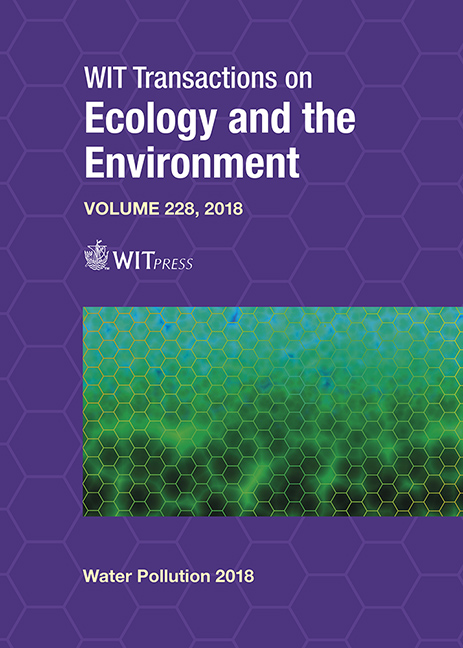GROUNDWATER QUALITY AND ITS DISTRIBUTION IN SILOAM VILLAGE, LIMPOPO PROVINCE, SOUTH AFRICA
Price
Free (open access)
Transaction
Volume
228
Pages
10
Page Range
35 - 44
Published
2018
Size
621 kb
Paper DOI
10.2495/WP180051
Copyright
WIT Press
Author(s)
RACHEL MAKUNGO, JOHN O. ODIYO
Abstract
Small scale subsistence agriculture aimed at ensuring food security at household level and lack of proper sanitary facilities make groundwater aquifers to be vulnerable to contamination. This is worse in rural communities that reside in semi-arid areas and are dependent on groundwater. Fertilisers from small scale subsistence agriculture and faecal matter from pit latrines contaminate groundwater aquifers. This study assessed the quality of groundwater from selected boreholes in Nzhelele area. A number of residents within Nzhelele area practice small scale subsistence agriculture and lack proper sanitary facilities. EC and pH and turbidity were measured using Cyberscan PC510 benchtop meter and Eutech TN 100 turbidity meter, respectively. 850 Professional Ion Chromatography and atomic absorption spectroscopy were used to analyse non-metals (nitrate, chloride, sulphate) and metals (copper, manganese, zinc, calcium, potassium, magnesium, and iron), respectively. EC, turbidity, chloride, nitrate and iron exceeded the recommended guidelines in some of the boreholes. Turbidity and nitrates had negative effects on human health. A borehole located within the vicinity of a small scale agricultural farm had elevated EC, turbidity, sulphate, magnesium, calcium, and copper. It is therefore crucial to urgently derive solutions aimed at minimising groundwater contamination and treatment of groundwater from the study area as it is the main source of domestic water supply. Spatial distribution maps and water quality classification based on nitrates and fluorides indicated class 4 groundwater quality which is dangerous and totally unsuitable for human consumption. These maps are therefore essential for interactive simple interpretation of water quality status, are useful as decision making tools even at locations where monitoring have not been done, and are useful in advising the residents on water quality parameters which may require treatment.
Keywords
groundwater contamination, pit latrines, subsistence agriculture, water quality





